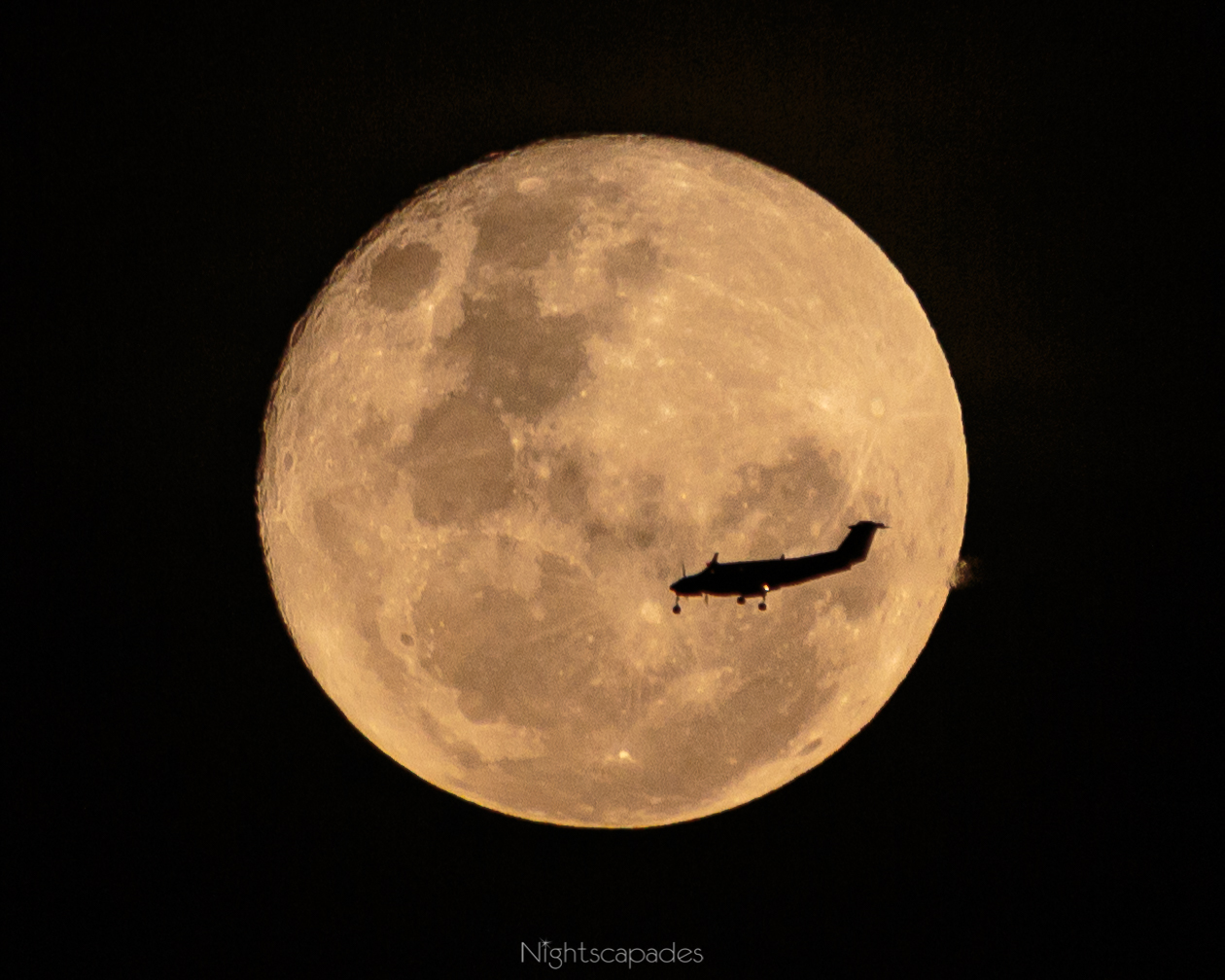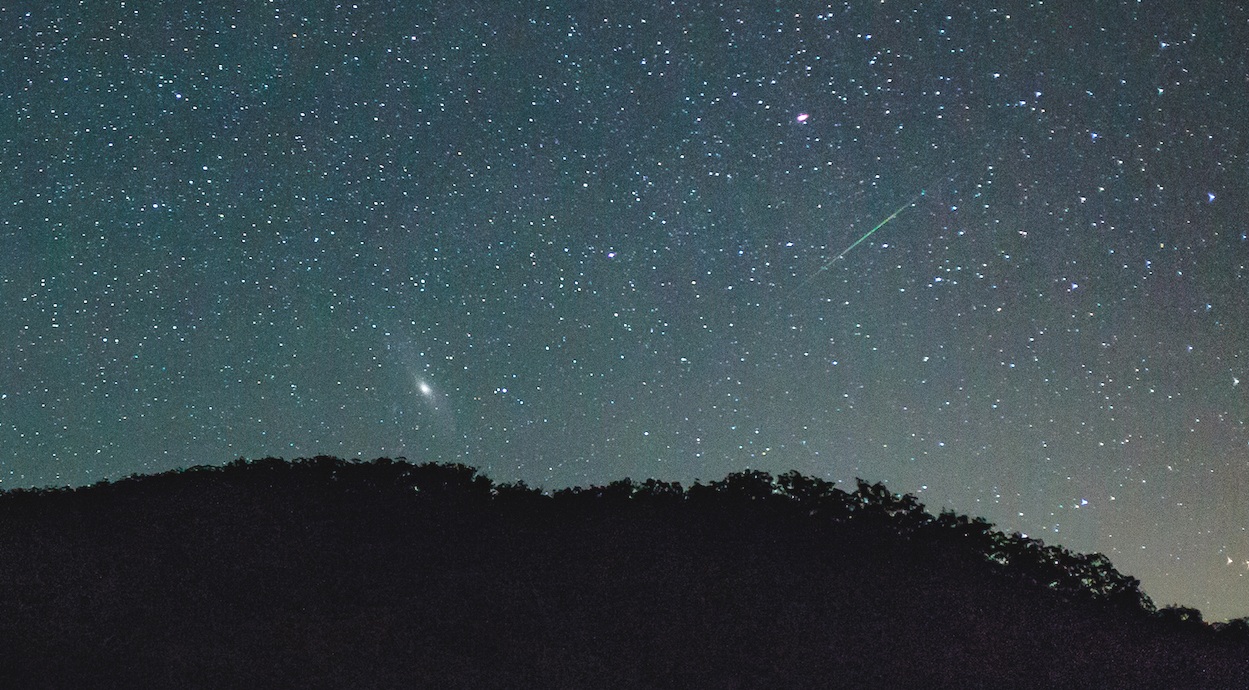
So still!
The tide was just past its peak when I was shooting this scene on a Friday night back in August of 2016. The water was flowing–ever so slowly–down the Shoalhaven River to make its way to the South Pacific Ocean, around 25km away. Despite this movement, the lack of any breeze made the top of the water into an almost perfect mirror.
Up at the top left-hand corner you can see the Small Magellanic Cloud, which is a companion galaxy to our own Milky Way galaxy. The colourful arch of stars, dust and gas that stretches almost right across the image is that same Milky Way galaxy and its “galactic core” region. The planets Mars and Saturn were close to one another in the sky back in August and you can see the two of them, along with the supergiant star Antares, glowing orange just over the tree line near the middle of the shot. All of these celestial wonders can also be seen reflecting off the surface of the river, with a surprising amount of the Milky Way’s structure visible in the mirror image. Spilling red light all over the rocks at right is the tiny LED pilot light in a battery that powers the dew heater keeping my camera lens warm and free from fogging.
This panoramic image was created by shooting 33 overlapping images, in three rows of eleven shots, then stitching the images together in the application “AutoPano Pro”. Each photo was shot with Canon EOS 6D, Rokinon 24mm lens @ f/2.8, 15 sec @ ISO 6400.

Tuross trails
Mars & the Milky Way setting over the Tuross River (Australia). Cameras are far more capable of capturing and rendering the colours that shine in the blackness of night than our human eyes.
Capturing all of that colour adds up when you put together a number of images that were shot over a period of time, as in this image. This results in the coloured curved stripes–the “star-trails”–in the sky and the even more colourful reflections of the brighter objects on the river’s surface.
The bright and wide orange reflection on the water’s surface is from the planet Mars as it set in the two-hour period over which the original frames were captured.
This image was created from 470 original photos, each shot with my Canon EOS 6D, Rokinon 24mm @ f/2.4, 13 sec exposure @ ISO 6400.

Blowing the clouds away
The wind farm near Tarago, Australia, makes for some interesting photographs. I set up this shot to make it seem like the turbines were trying to blow away the Magellanic Clouds.
The site was one of those “Private property - No Trespassing” places so I couldn’t flash much light around to see where I was going. Somehow I moved around without tripping or dropping anything. The sky was showing a lot of orange airglow with a few green patches showing through. There was also moisture in the air contributing to the discolouration.
Canon EOS 6D, Canon 40mm STM @ f/2.8, 13 sec @ ISO 6400

Dwarves dwelling in the heavens
In a number of mythologies the dwarves are small human-like beings who live under the ground and in the mountains. Featured in J.R.R Tolkein’s writings of the 1930s and 1940s the dwarves are well known to humans, elves and other races of beings of their worlds. Compilations of Norse literature from the 1300s AD contain discussions of the origins of these mythical creatures.
Much older than that, though, are the dwarves that dwell in the heavens. The Small and Large Magellanic Clouds are dwarf galaxies that are travelling with our Milky Way galaxy through our part of the Local Group of galaxies. In July, 2016 I captured these heavenly wonders in the south-eastern skies of Australia. The Large Magellanic Cloud’s reflection is shimmering in the Tuross River next to the lovely timber bridge. The colour tint in the sky is due to atmospheric airglow and moisture in the wintry night air.
Shot with a Canon EOS 6D, Rokinon 24mm @ f/2.8, 15 sec @ ISO 6400.

Circles in the southern sky
The stars of my southern hemisphere cutting trails across the sky as they appear to orbit the South Celestial Pole over Seven Mile Beach, New South Wales, Australia.
The orange glow on the right is from some cloud that blew in, lit by the light pollution from the city of Nowra, 22km away. The clouds interrupted the trails a little which is why they stop & start at lower right. The waves are blue from the presence of bioluminescent organisms in the water.
Produced from 163 images taken over 45 minutes, each shot with Canon EOS 6D, Samyang 14mm lens @ f/4.0, 15 sec @ ISO 6400.

Stacks of detail
This shot of the Milky Way’s galactic core region, captured on Saddleback Mountain (Australia), includes quite a few interesting features. The “Dark Horse” nebula is one of the most prominent parts of the shot, although down here in the Southern Hemisphere it’s more often known as the “Galactic Kiwi” due to its resemblance to the national bird of New Zealand. Grouped down at the bottom of the frame is the bright orange supergiant star Antares, with Mars below it and Saturn across further to the right. In the same area as Antares is the Rho Ophiuchi cloud complex, a star-forming region of space. You can see some of the yellow and blue gas clouds in the photo.
This is a "stacked" image created from 32 individual frames. Stacking reduces the digital noise of the overall image and helps to bring out a bit more detail than a single shot would. The 13 frames were captured with Canon EOS 6D, Canon 50mm @ f/2.8, 6 sec @ ISO 6400.

The one that didn't get away!
On the last weekend of July 2016, I was visiting the Blue Mountains, about 120km west of my home in Sydney, Australia. While out shooting Milky Way panoramas that night I missed out on catching two bright meteors that briefly left trails on the sky. I didn’t miss this one, though!
With my camera set to take a photo every 25 seconds, I pointed it at the region of the sky where the meteors were radiating from. Briefly looking away from the sky and back towards my car, the landscape lit up so brightly that I thought there had been a flash of lightning. I glanced skywards to see the last gasp of a meteor as it burned up in the earth’s atmosphere. Like the two big-uns that I missed earlier this one left a trail on the sky for a couple of seconds.
Captured with Canon EOS 6D, Samyang 14mm @ f/4.0, 25 sec @ ISO 6400.

Ambulance on approach
Shot one day after its full phase, here is the 99% full Nov 2016 "supermoon" providing a backdrop for a Beech B300 Super King Air on approach to Sydney’s Kingsford Smith International Airport (Australia).
This aircraft is operated by the The Royal Flying Doctor Service of Australia (RFDS), one of the largest and most comprehensive aeromedical organisations in the world.
Perhaps one day their area of service will include the moon! Shot with Canon EOS 6D, Sigma 50-500mm lens @ 500mm @ f/7.1, 1/500 sec @ ISO 800.

Down in the valley
I was like a little kid in a toyshop when I saw the Andromeda Galaxy (M31) on my camera’s LCD while reviewing this photo. M31 is easily visible to the naked eye in the northern hemisphere but not so much down here in southern Australia. The Andromeda Galaxy is the yellow-white smudge just over the hilltop about one third in from the left.
Up and to the right of that is the green trail of a meteor burning up in our atmosphere. A bonus was also getting another galaxy, the M33 “Triangulum Galaxy” almost at the edge at the upper right. It’s quite faint and hard to see, but it’s there. M33 is the faintest galaxy visible with the naked eye. This night was the first night I’d ever seen M31 with my eyes, and that took a lot of doing, so a naked-eye sighting of M33 was out of the question. The dark green tint to the sky is from atmospheric airglow.
Shot with a Canon EOS 6D, Canon 50mm STM lens @ f/2.5, 8 sec @ ISO 6400.

Cosmic spray
People from the northern hemisphere often comment on how they’d love to see the Milky Way’s core high in the sky like this. Come on down to Australia, or visit New Zealand, or get below the equator in Africa or South America and you’ll be in for this treat (at the right time of year).
Some extra goodies in this part of the sky when I shot this were the planets Mars and Saturn. Mars is exactly mid-way down the photo at the left, shining a nice orange colour. Below and very slightly to the right of it is the whitish light that is Saturn.
A single frame shot with Canon EOS 6D, Rokinon 24mm @ f/2.8, 13 sec @ ISO 6400.00

Brightened Bridge
This star-trails image shows the stars’ apparent movement across the sky over a period of about an hour-and-a-quarter. The central point that the stars seem to rotate about is called the South Celestial Pole.
Cars & trucks crossing the unlit bridge over the Tuross River gave it and the water below the bright white glow that you can see,and also lit up the sand in the foreground. Reflected on the water’s surface are navigation lights on the bridge’s pylons and some of the trails from the starlight above.
This single photo is made up from 153 individual shots that were compiled using the software “StarStaX. Each image was shot with Canon EOS 6D, Samyang 14mm lens @ f/4.0, 25 sec exposure @ ISO 4000.

Stop, Look, Listen
Shooting at a dark location means a couple of hours driving from home, checking Milky Way alignment and access to the spot, then setting up gear, taking test shots, checking alignment again, getting the foreground lighting right, then taking some production shots, checking again, etc, etc. Some or all of those actions get repeated multiple times through the night before driving home.
That’s why it’s important to stop for a bit and look at what amazing things are above me; listen to the ambient sounds like the ocean and local wildlife; and enjoy the beauty of the moment. In this photo, Mars is the bright and orange point of light at top left and Saturn is below that, on a line pointing towards me.
Captured 30/04/16 at Seven Mile Beach near Gerroa, Australia. Canon EOS 6D, Rokinon 24mm @ f/2.8, 15 sec @ ISO 3200.












